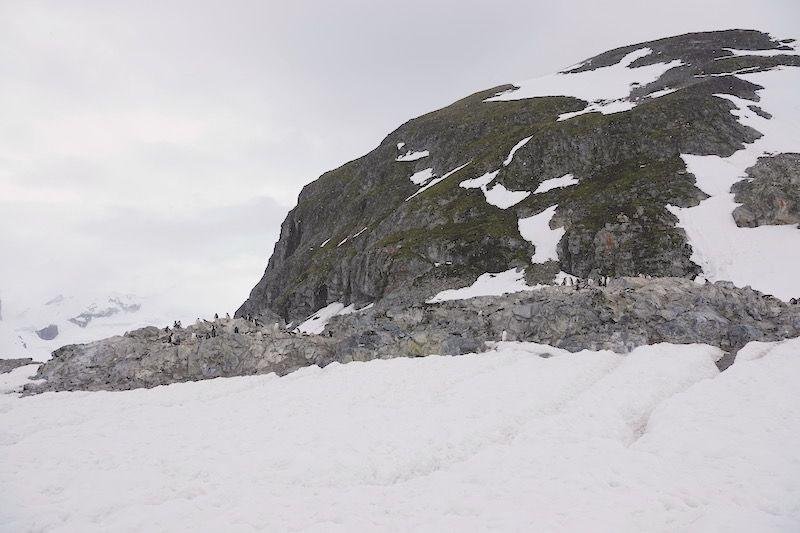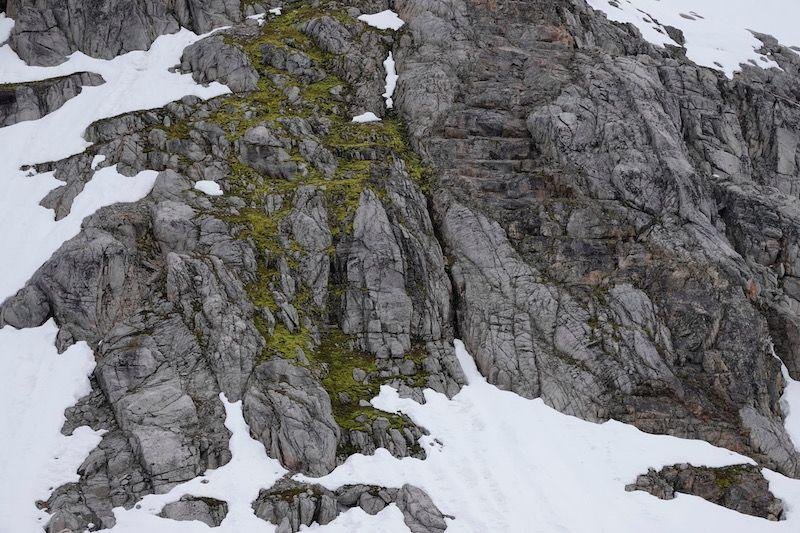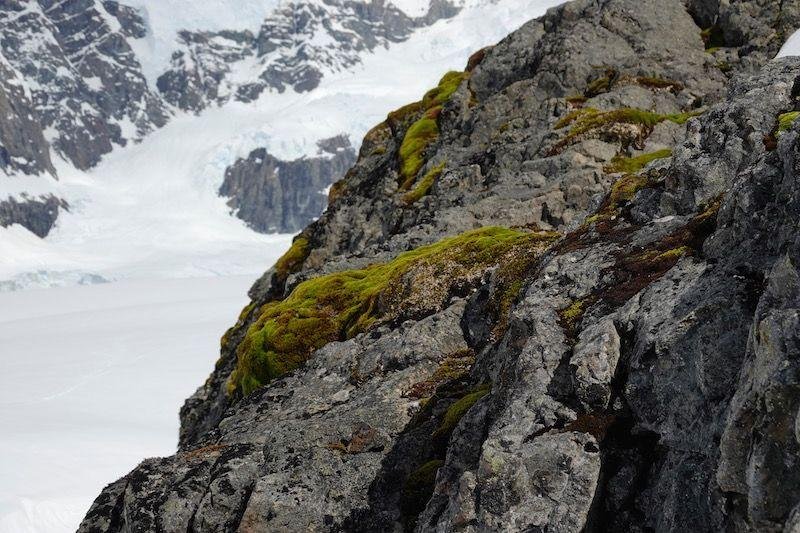Displaying items by tag: Antarctic moss
Witnessing changes in Antarctica’s ancient forests
Professor Sharon Robinson has just returned from 19 days aboard the MV Ushuaia as part of the Homeward Bound Leadership Faculty 2019. She led the On Board Science Stream leader with Dr Katherine Duncan.
Antarctica seems like a long way from anywhere but climate change is affecting the tiny plants and animals that make their home there. Along the Antarctic Peninsula region, that Homeward Bound 3 is visiting, the climate is becoming much warmer and wetter which means that plants can colonise new ice-free areas and grow faster.

On the other side of the continent it is getting colder and drier and the plants are having a tougher time. My team have shown that some East Antarctic moss beds are drying out and dying.2-4So from pole to pole, and all around Antarctica, these tiny plants are recording how we are changing our planet as they grow. My team’s work shows that although these plants are tiny (a few centimeters tall), they can be hundreds of years old. They are the old growth forests of Antarctica, home to tiny microscopic animals, like water bears or moss piglets (tardigrades) springtails and nematode worms, as well as fungi and microbes. We know the plants are hundreds of years oldbecause as they grow, they lay down a signal of the carbon dioxide in the air and so record changes in the composition of carbon dioxide. From coal burning to radioactivity released from nuclear testing in the 1950s and 1960s (the bomb pulse) they are recording the Anthropocene from the bottom of the globe. That means they are sentinels for our past, as well as early warning of possible global futures.
These plants survive freezing winters, emerging from under winter snow for a brief summer of weeks to just a few months. They get their water from ice melt and their nutrients from ancient deposits of penguin poo, as well as more recent bird droppings.
They grow all around the Antarctic coast, and it is exciting to think that we may be the first people to see some of these plants as they take over newly exposed land on the peninsula.
On 13thJanuary, we saw a lot of moss growing near the Admirante Brown (Argentinian) Station. Based on their past visits, our guides on the Ushuaia were able to show us how fast the ice is retreating behind the station and we can see the moss that is colonising these newly exposed rocks. We saw many species of bright green moss on this one landing.
The day was so warm, we could see tiny animals, small as a pin head, running around. These invertebrates live in the tiny moss forests and on warm days roam around the nearby rocks looking for food. I was excited to see my first Antarctic midge (Belgica antarctica), the wingless fly that is found on the Peninsula.
But there is also a sobering message of climate change in action. Seeing first hand, how quickly the glaciers are retreating and the area is changing, makes the Homeward Bound goal of building a sustainable global future even more important.
References
- Waterman M, Turnbull J and Robinson, S (2018) Antarctica’s ‘moss forests’ are drying and dying https://theconversation.com/antarcticas-moss-forests-are-drying-and-dying-103751
- Sharon Robinson, Melinda Waterman & Andrew Netherwood (2017) East Antarctic mosses reveal a windier, drier climate https://youtu.be/LF4p3ng0HRQ
- Robinson SA, King D, Bramley-Alves J, Waterman MJ, Ashcroft MB, Wasley J,Turnbull JD,Miller RE,Ryan-Colton E, Benny T,Mullany K,Clarke, LJ, Barry, L, HuaQ. (2018) Rapid change in East Antarctic terrestrial vegetation in response to regional drying.Nature Climate Change 8, 879-884, DOI: 10.1038/s41558-018-0280-0
From the Poles to the Tropics in Kuala Lumpur
We have just got back from KL where the Scientific Committee for Antarctic Research held its biennial meeting. Mel and I went via Singapore so we could catch up with Jessica on the way. We got to see the Singapore Botanical Gardens as well and meet some VIP orchids. Diana and Mick met up with us in KL. Xurxo Gago who is visiting our lab for a few months came from Spain. We also met up with our Antarctic collaborators Todd from Portland, USA and Angelica from Concepcion, Chile as well as several hundred other Antarctic Scientists. We were surprised to find that fashion week was on in KL but we couldn’t find a red shoe to pose in (see news from SCAR 2014 in NZ).
Interdisciplinary Pathways to Antarctica - Eco-Antarctica Symposium
Antarctica is a natural subject for interdisciplinary exploration because it ignites passion and curiosity on so many fronts. The day brought together a kaleidoscope of interested parties from the worlds of visual art, toxicology, history, climate science, law, plant biology and the humanities. Such disciplinary diversity gave a taste of the contradictions that Antarctica embraces - whether from the point of view of temperature change, ice movement or the tourism industry of this remote continent.
A Talk at the Eco Antarctica Symposium
Here are links to a video of a presentation that I gave at the Eco Antarctica Symposium - "INTERDISCIPLINARY PATHWAYS TO ANTARCTICA" on 9 August 2016 at the Leon Kane-Maguire Theatre, Innovation Campus, University of Wollongong.
The video is available in HD from my multimedia page
and also on Youtube, where you can find some of my other media presentations.
New model quantifies uncertainty in species response curves
Many ecological questions require information on species' optima in relation to environmental gradients. These attributes can be important in determining which species will coexistence and how this may vary with climate changes. However, existing methods do not quantify the uncertainty in the attributes or they rely on assumptions about the shape of species' responses to the environmental gradient. To remedy this, Mick Ashcroft and the team recently developed a model to quantify the uncertainty in the attributes of species response curves and allow them to be tested for differences without making assumptions about the shape of the responses.
Congratulations & Scientific Connections Part 2
On Wednesday we celebrated four graduands. Dr Mel Waterman and Dr Johanna Turnbull were awarded their PhDs. Professor Bob Furbank became Dr Dr Bob. He was awarded an Honorary Doctor of Science. In his inspiring graduation speech he told the graduands how important it was to try and work in an area which you love. I certainly agree with that sentiment. He also talked about the important part played by mentors, peers and of course serendipity.
Comings and goings in the Lab
It has been a busy month. PhD Student Beat Keller visited us from Germany bringing the new Forschungszentrum Jülich LIFT for Rhys to try out. Then we got new stronger light emitting diodes (LEDs) for our instrument so Rhys and Beat installed these. We can know measure fluoresence over bigger areas of canopy. So Rhys is pretty happy. You can see them working in the dark here.
The K-Axident
by Dr Laurence Clarke
Just over 10 years ago, Sharon and I got within 12 nautical miles of Mawson station when we came to Antarctica to collect moss samples as part of my PhD project. At the time the sea ice was too thick and we had to turn back, but we already had enough samples from Casey and Davis so it wasn’t a big deal.
Dr Jess explains why she loves her PHD
Recent PhD graduate Dr Jessica Bramley-Alves has written an article for the Guardian Higher Education section Why I love my PhD. Like Laurence she worked in Antarctica. She writes “My PhD takes me to one of the last truly wild places on earth. I thought a PhD wouldn’t suit me or I’d find the lab work tedious. But it’s actually been a great adventure”
Read more here
King George Island, one year later.
I am lucky to participate in another research trip to King George Island (KGI), West Antarctica organised by the Instituto Antartico Chileno. Last year Sharon, Andrew and I were part of a group of scientists from a diverse range of countries lead by Angélica Casanova-Katny. This time around I am accompanying Gustavo, Tavo and Marisol from USACH as part of my Endeavour program.





